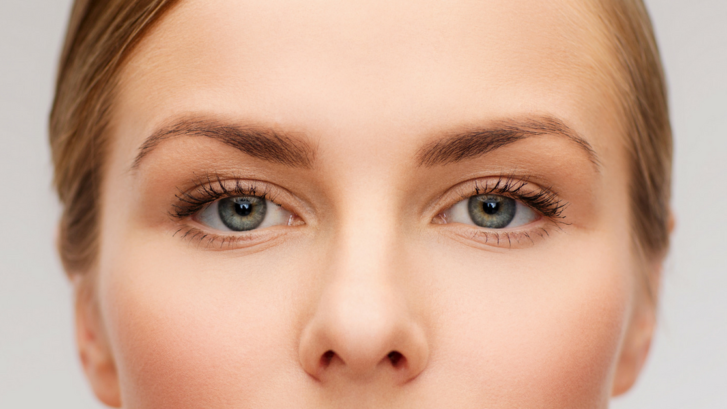A Real Eye-Opener: The Low Down on Blepharoplasty
Aging gracefully. Sometimes Father Time makes the “gracefully” part challenging. For many signs of aging, such as graying hair, a visit to your local stylist can fix that with hair dye. However, what about your eyes?
You may have laugh lines that add character to your face. Those dark circles? You finally found good makeup for those.
But then there are saggy eyelids. Developing in our late thirties and early forties, this droopiness may make you look more tired and older than you care to admit.
A popular cosmetic surgery procedure, blepharoplasty (or “bleph” for short) is “an outpatient procedure that involves trimming excess tissue (that includes skin, muscle and fat) from around the eyelids. It can be performed by an ophthalmologist, oculoplastic surgeon, plastic surgeon, oral or maxillofacial surgeon, or ear, nose and throat surgeon.”
Some patients opt for blepharoplasty for cosmetic reasons, as we discussed above. Other patients, however, choose this procedure to correct vision issues as sagging eyelids can impair your vision. Surgery can be performed on both the upper and lower lids.
Read on to see if you’re a good candidate for eyelid surgery.
Are You a Good Candidate for Blepharoplasty?
To fully know if you are a good candidate for eyelid surgery, consult with a board-certified physician with significant experience in blepharoplasty procedures. However, here are some things to consider when determining if this surgery is right for you:
- You’re physically healthy.
- You have no health conditions that can interfere with healing.
- You’re a non-smoker.
- You don’t have any eye conditions, such as dry eyes, that can interfere with the surgery itself or the healing process.
Your physician can weigh these conditions during your consultation, advising you if you’re a good candidate for surgery. Of course, in deciding whether to move forward, you should discuss the possible risks involved while expressing any expectations and concerns. Information is abundant but not always reliable, so it is always best to openly discuss the process and your concerns with your surgeon.
What to Expect Before the Surgery?
Before surgery, be prepared to have both a vision and physical exam done. You’ll also be instructed to arrange for transportation on the day of the surgery, as you will be unable to drive. You may also be asked to discuss your medical history and to avoid specific medicines, such as aspirin, before the procedure, as they can often cause bruising and excessive bleeding. Additionally, if you’re a smoker, you’ll be advised to stop smoking so as not to interfere with your healing process.
What to Expect During the Surgery?
During the surgery, you may be put under general anesthesia. If you have ever had any adverse reactions to anesthesia in the past, be sure to tell your doctor in your pre-surgery consultation.
Some doctors, however, may give you a mild sedative or local anesthetic, where you’ll be awake during the procedure. Discuss these options with your doctor, determining which is best for you.
Next, the doctor creates an incision, opening up the eyes by removing excess skin and fat from the area, improving your appearance. This may also help in fixing any overhanging skin that could be affecting your vision. Incisions are made in the natural folds of the eyelid, making scarring virtually unnoticeable once the healing process is complete.
Here are some standard techniques used during a blepharoplasty procedure:
Transconjunctival Blepharoplasty
This procedure is ideal for younger patients, who have fatty pockets under their eyes but no excess skin.
Transconjunctival Blepharoplasty with the Pinch Technique
This procedure is ideal for patients who have only a small amount of excess skin under their lower lid, utilizing a pinch technique.
Peels and Laser Resurfacing of the Lower Eyelid
In situations where a patient has excessive fine wrinkling or discoloration in the lower lid, a chemical peel or laser resurfacing can be performed along with surgery.
External Incisions & Canthoplasty
More severe eyelid conditions may require a reconstructive approach. These conditions include drooping lower lids, sagging skin and muscle of the lower lids, and tear trough deformity. Board-certified plastic surgeons may use various methods to shape and perfect the eye area, brightening the patient’s face.
Eyelid incisions are typically closed with skin glue or sutures. If sutures are used, then they are usually removed within a week.
What to Expect After the Surgery?
Like many cosmetic procedures, your results will appear gradually as the bruising and swelling diminish. Sutures will either dissolve or be removed within a week after the surgery. Patients can expect to experience some short-term discomfort such as light sensitivity, watery eyes, or dry eyes. You may also experience some discomfort or itching at the incision points.
Although severe complications are rare, patients should avoid straining or heavy lifting, rubbing the eyes, or wearing contacts, immediately following surgery. They should also make sure to wear darkly tinted sunglasses to protect their eyes from sunlight. You should also sleep with your head raised higher than your chest for a few days. Be gentle when cleaning the eyelids, and avoid makeup for ten days.
As you recover, you may use cold compresses or lubricating ointments, helping with any discomfort you may experience. Your doctor will give you further instructions for care, such as which oral medications are permissible. Further, your doctor will set a follow-up appointment, checking your healing process.
Schedule a Consultation
Ready to look bright and refreshed? Schedule a consultation with Dr. Binder today to discuss what blepharoplasty can do for you. With over 30 years of experience in the industry, Dr. Binder has the skills and expertise to give you the results you deserve.

